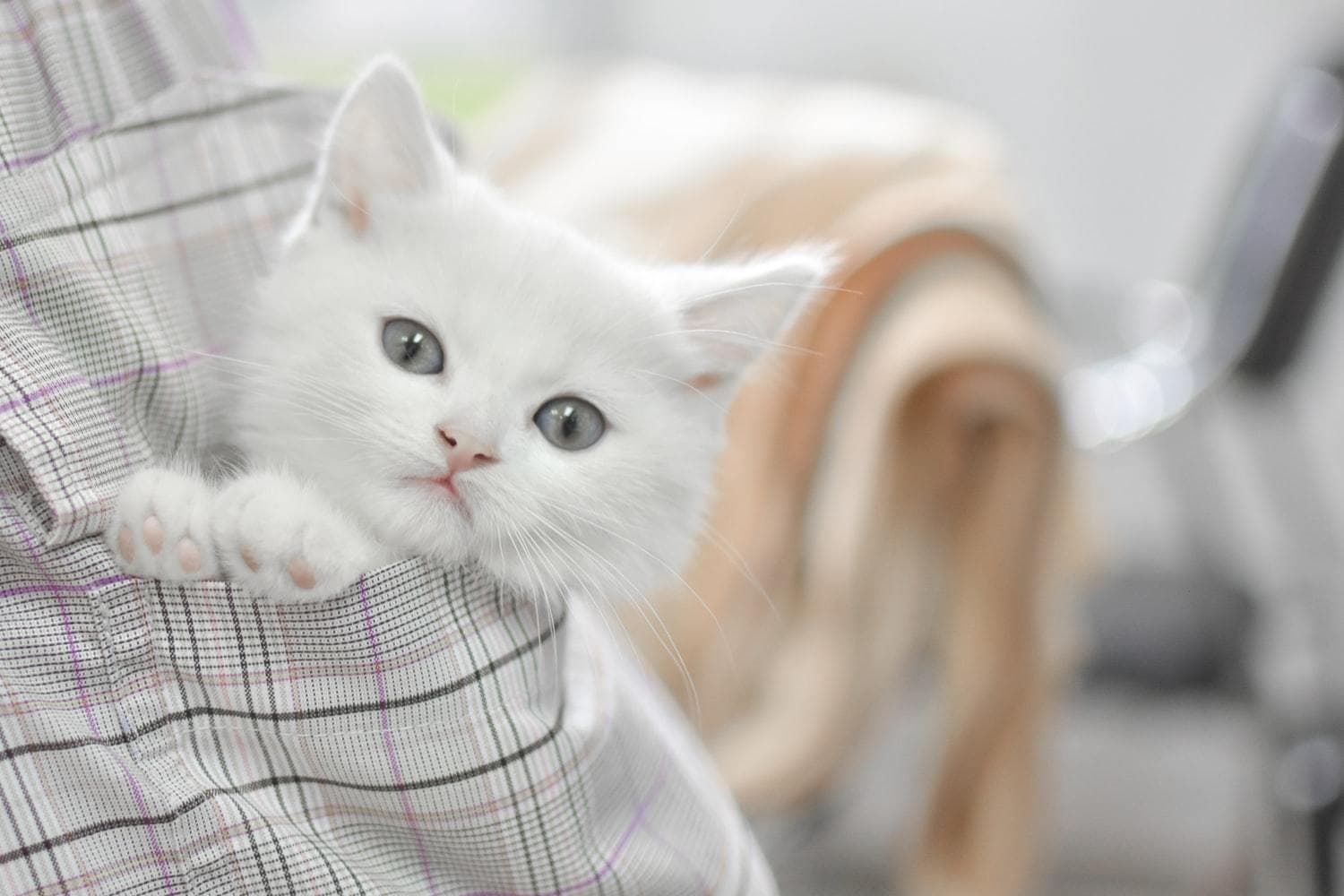Here at Basepaws, we spend hours reading, talking and thinking about cats every day. While we're working our science at the lab and creating diverse kitty content for you, we often stumble upon quite a few quirky and very random facts about cats. Here are some of our recent favorites. Will you know them all?
Random facts about cats
We get it - you love cats. So do we! There are so many things that many don't know about cats (especially genetic predispositions, which you can test for), so we compiled a list of random facts about cats that you need to know.
1. Cats CAN drink saltwater
While you won't be refreshed by a glass of saltwater, your kitty actually can be. Feline kidneys can filter out the salt from water, which allows them to consume and rehydrate by drinking salt water. While it's safe for your cat to occasionally drink from saltwater pools, and while they can tolerate higher salt intake than dogs, this does NOT mean that should consume large amounts of salt. High salt intake can lead to excessive thirst, urination or even sodium ion poisoning. So, although your kitty can tolerate low amounts of salt water, always provide them with plenty of freshwater to prevent high consumption of salt water. If your cat drinks too much salt water, consult with a vet immediately.
2. Cats drink quite differently from dogs
Cats and dogs lapping a bowl of water may sometimes seem similar, but their lapping technique is actually quite different. We've known canine lapping technique for a while, simply because they are easier to observe and study. But now we know how cats drink water, too! Cats dip their tongues in the surface of the water and flick the water up so that a small amount of liquid goes into the air. They then catch this liquid in their mouth. This unusual drinking technique is more elaborate than that of canines, but it is not necessarily "better". Dogs "scoop" water with their tongue, which is arguably a more efficient drinking method. But, cats are quirky and we like it!

3. Cats can't taste sweetness
The feline digestive tract is specifically adapted to the digestion of a meat-based diet. Cats are indifferent to the taste of sugar, which is believed to be an evolutionary force that has driven cats to eat fewer plants and more meat. These are called predatory evolutionary advances.
4. Cats can be right- or left-pawed
Just like us, many cats also have a dominant paw. Is your kitty right- or left-pawed? Observe which paw they tend to use more often when reaching out for food or toys and try to figure it out! Research showed that female kitties are more likely to be right-pawed, while males are more often left-pawed. Some kitties don’t seem to have a preference at all. Interesting, isn't it?
5. Your cat's fingerprint is its... nose print!
Your cat's cute little nose is as unique as your fingerprints. Every feline nose has a unique pattern of bumps and ridges, and no two kitty noses are the same.

6. Cats are not the only animals who can purr
A soft, deep, rumbly purr is sure to melt anyone’s heart. Purring is a lovely sound, but it's often exclusively associated with cats. Did you know that many other animals can purr as well? Purring is observed among many cat species and a few species of viverrids. Some other animals like hyenas, foxes, bears, raccoons, rabbits, squirrels, guinea pigs and gorillas purr while they eat. It was also recently discovered that elephants can produce purr-like sounds too.
7. Purring may be healing
It is often thought that a cat’s purring plays a role in communicating reassurance and can be associated with a relaxed state, enjoyment, or at times, discomfort and pain. It was suggested that purring triggers the feline brain to release hormones which aid in alleviating pain by acting as painkillers. Furthermore, purring may also be involved in maintaining bone density which could be harmed by long periods of sleep and rest, which are typical for cats.
8. Cats cannot see below their nose
Cats have exceptional sight. They are able to detect movement highly efficiently and precisely, even in low light. However, they don't actually see that well close-up. Their vision is designed to detect objects that are relatively far away, but if something is close enough to your kitty, it will rely on its scent of smell instead.

9. There once was a cat who was... a mayor!
An orange tabby named Stubbs officially held the highest office in an Alaskan town named Talkeetna for 20 consecutive years. Yes, you read that right. He was loved by his hoomans, and although his role was symbolic rather than functional, the town was very fond of his legacy.
10. Cats use the same walk as camels as giraffes
Yes, we know, this one sounds wild. But, hear us out! Cats walk and move with undeniable grace and elegance. You may never have thought to compare their walk to any other animal, simply because it's very feline-like. However, camels and giraffes actually use the exact same walking sequence. They all move the right front and hind feet first, followed by both left feet, moving half of the body at once. Cats, camels and giraffes are the only known animals to walk this way. Be amazed!



